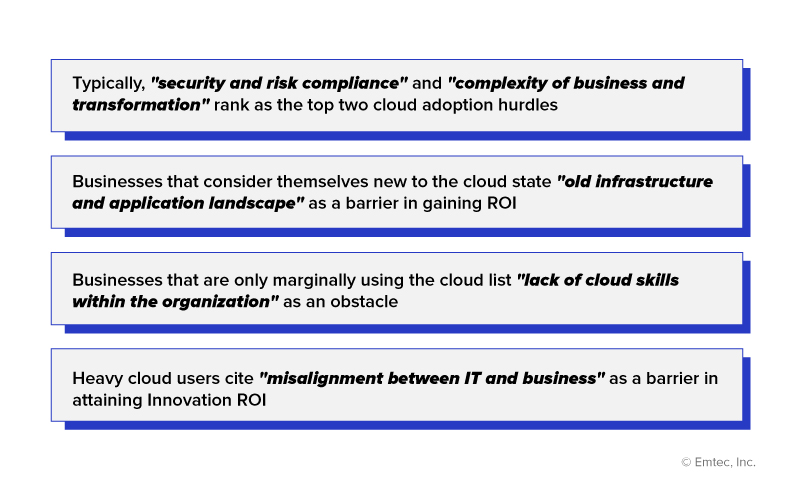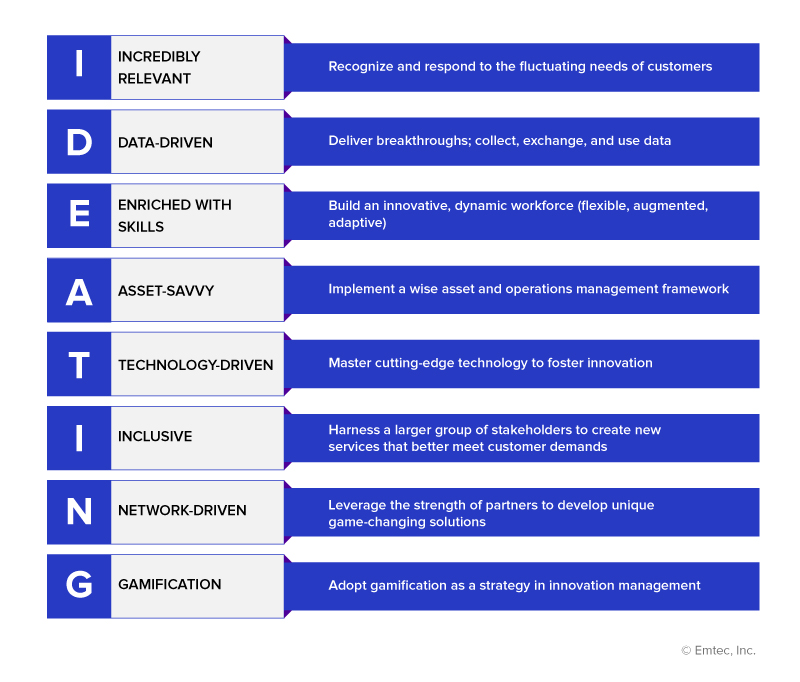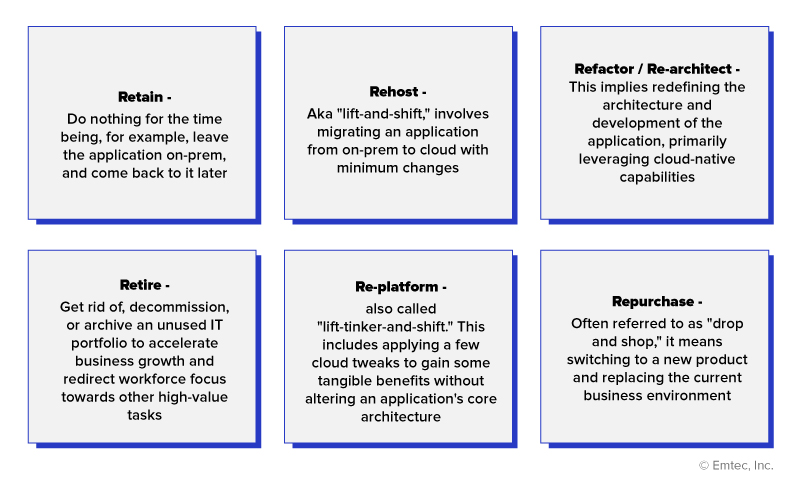07.26.22 By Bridgenext Think Tank

Cloud has become a readymade strategy enabling businesses to gain actionable insights from real-time data, improve decision-making, and seize new possibilities – all while disrupting and differentiating with accelerated innovation. Cloud is the new-age innovation catalyst, essential to system resilience, infrastructure modernization, and competitive advantage. Businesses are aggressively hosting critical applications on the cloud, making it an enterprise standard. But did you know, investing in the cloud goes beyond mere cost benefits? It also implies putting the business on a fast track to structured innovation.
As global markets shift to newer digital realms and businesses accelerate technology adoption, the cloud will likely garner a big chunk of the ROI. But how companies perceive and calculate cloud-generated ROI is quite intriguing. This blog questions the fundamental definition of ROI and whether you are getting the desired ROI on your cloud investments.
ROI should be coined as a “Return on Innovation” rather than just a mere “Return on Investment”. The perception of gained ROI on cloud investments is still limited to the binary approach of ROI calculation. Therefore, several businesses have been failing to tap into the full potential of Innovation ROI generated from cloud investments. Thinking ROI derived from cloud investments as a return on investment means only sticking to the fixed outcomes and staking the business’s innovation ability. On the other hand, measuring ROI on the innovation front means adopting a prototyping and continuous evolution mindset. Sure, companies face a bit of difficulty while moving on to cloud-native applications initially, but it is a journey on the J-curve, i.e., a trip followed by minor setbacks leading to significant gains. Assessing ROI with a myopic view can lead to roadblocks down your cloud journey.
Typical financial benchmarks will not be enough; KPIs and metrics need to be established when calculating Innovation ROI. When you are ready to think beyond the math, try baselining the innovations cloud brings to your business because that will drive the Return on Innovation. Return on Innovation doesn’t depend on how much you spend; it depends on how you spend it. In the digital transformation parlance, ROI isn’t just about how much money a cloud investment will generate; it’s also about the value of the entire cloud experience and the tangible and intangible benefits it delivers. As cloud migration is an intricate process, it is crucial to consider various benefits that aren’t usually quantified in monetary terms to create a realistic picture of Innovation ROI. Comparing revenues and costs to determine ROI in the cloud does not paint the entire picture. Beyond the financial outlay, it is essential to view and comprehend several perspectives. Innovation ROI from transitioning to the cloud involves more than just tinkering with numbers. Cloud benefits such as lower hardware costs, improved skills, better compliance, enhanced cooperation, and newer innovations are critical factors that bring in the cloud value used to calculate Innovation ROI.
The cloud is no longer just for technologists. Business leaders too are embracing the significant potential that the cloud offers to foster economic growth, form stronger relationships with customers, and utilize workforce skills effectively. The cloud has transformed from the tech initially adopted for efficiency and cost savings into an innovation hotspot, empowering businesses with next-gen innovations necessary to fuel competitive advantage.
$770 billion of the cloud’s core value will come from innovation-driven growth instead of $430 billion from cost and risk reduction, accounting for 75% of the cloud’s expected value – McKinsey
Some of the capabilities of cloud as a catalyst for Innovation ROI are highlighted below:
While the cloud comes with so many benefits, only a few businesses can successfully maximize the potential from enterprise innovation. Most companies miss significant chances to increase profitability and boost market value. Amid the rise in innovation expenses, profits are not quite up to the mark. Over the past few years, the Innovation ROI on cloud investments hasn’t precisely matched the investments made. Businesses are spending more money than ever, yet it’s alarming that they’re not getting the right results. This may be partly because many businesses still view Innovation ROI as a tangential activity unrelated to their core competencies — an “ad hoc creative process” rather than a set of procedures that radically alter how they conduct business.
About 30% of cloud spending is wasted with roughly 23% going over budget – McKinsey
Most companies struggle to get the intended returns on their cloud investments. Some of the barriers to fully achieving the benefits of cloud adoption are highlighted below:

Intangible values derived from cloud-based innovation are truly the long-term growth-accelerating strategic gains. Intangibles shouldn’t be an afterthought when discussing ROI by leveraging cloud-based innovation; rather, they should be the major factor determining increased financial returns for the business.
Some of key traits that can help businesses achieve more out of their investments in innovation are listed below. Businesses should be constantly IDEATING-

Adobe is a classic example of how to leverage innovation collaboration to derive Innovation ROI. In 2013, Adobe actively pushed its entire product portfolio online rather than sticking to its current business strategy, and it paid off in spades. According to the company’s most recent financial reports, it had a record fourth-quarter revenue of $4.11 billion, or a 20% increase over the same period last year. Adobe’s software piracy decreased because of the shift to cloud, as all the functionality of cloud-delivered software is hosted and managed online.
Adobe supports innovative businesses to fully embrace digital transformation. Up until this moment, Adobe’s success was primarily attributed to its understanding of people and how they interact with its products daily. Adobe understood it had to reorient its workforce to the needs of customers when it made the decision to go from on-prem to cloud. To do this, it organized a staff “experience-a-thon” where employees could test and critique Adobe products as if they were actual customers. In the middle of a significant technical upheaval, this fostered innovation collaboration bringing in the innovation culture to derive maximum Innovation ROI.
Cloud ROI directly relates to how cloud-native applications are effectively used. It is important to keep track of usage because the increase in return is directly proportional to the increase in using cloud-native applications. The inherent complexity is inevitable when determining credible ROI by leveraging cloud value. Furthermore, a thorough refactoring would yield more value than a re-platforming, considering cloud value depends on the degree of cloud adoption. Therefore, the calculation must be able to account for the variation in ROI predicated on the migration method, captured in what we call the 6 R’s, as explained under:

Depending on which of the above R’s are utilized, businesses will incur different cloud migration costs generating different cloud value. The actual cloud value will vary based on typical enterprise use cases. When conducting an ROI assessment, it’s important to understand that the cloud is an economic innovation, and each benefit it delivers will have a multiplying influence on the business. So, the ROI estimated initially for cloud investments may appear marginal. But as cloud benefits continue to grow, the ROI estimated over three or five years will be substantially greater. When measured over time, Innovation ROI demonstrates a significant boost from cloud investments.
To achieve real Innovation ROI, it is imperative to understand how cloud benefits can be attained fully. By following the below-mentioned practices, you can reap tangible value from your cloud investments:
So what ROI are you really tracking? Is it the monetary return on your standard investments in cloud? Or is it the intangible value garnered through a focused cloud innovation strategy? Let us know!
References
https://www.mckinsey.com/business-functions/mckinsey-digital/our-insights/five-fifty-cloudy-with-a-chance-of-billions
https://www.mckinsey.com/business-functions/mckinsey-digital/our-insights/five-fifty-cloudy-with-a-chance-of-billions?cid=fivefifty-eml-alt-mkq-mck&hlkid=f176f21b6cf7420b880d34a137a7c4b6&hctky=10701792&hdpid=1a578973-0103-4513-a769-95b160b01d32
https://news.adobe.com/news/news-details/2021/Adobe-Reports-Record-Q4-and-Fiscal-2021-Revenue-Company-Outlines-Strategy-for-Next-Decade-of-Growth/default.aspx